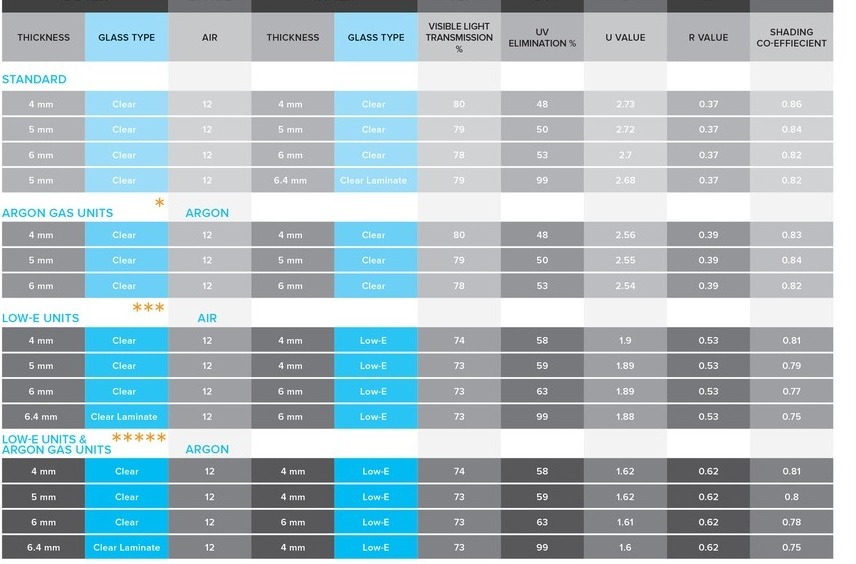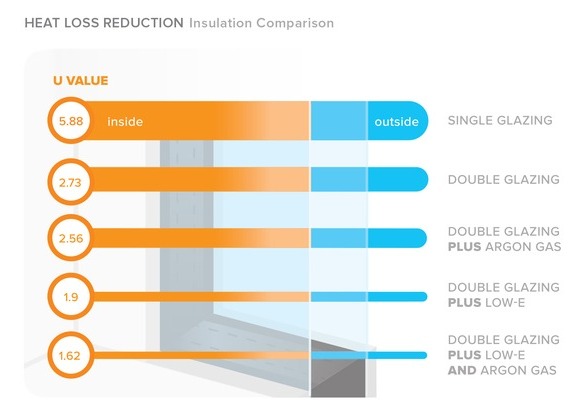Double Glazing Glass Types & Performance

Get To Know Your Glass
Here is a list of explanations of common glass terminology so you are not left in the dark.
Visible Light Transmission (VLT)
The amount of visible light that passes through the glass. This is normally identified as a percentage. The higher the VLT percentage, the more daylight in a room.
UV Elimination %
This is the percentage of ultraviolet rays that your glass blocks. The higher the percentage the less UV passes through the glass.
R Value
The R-value tells you how well the total window system insulates. This includes the types of glass, spacer, and joinery being used. Higher R-values are better, indicating that less heat is being lost through the window, resulting in better insulation.
Shading Co-Efficient
Shading co-efficient is a measure of the effective solar rejection performance of a given glass type. A lower shading co-efficient indicates higher restriction of the transfer of solar heat.
Low Emissivity (Low E) Glass
A Low E coating reduces the amount of heat transfer through a pane of glass. Low E coatings can reflect radiant heat - either from outside or inside, therefore reducing the heating and cooling costs of your home.
Argon
Argon gas is a naturally occurring, non-harmful gas. When Argon gas is inserted between the panes of glass it increases the insulating performance of your double glazing.
U Value
This measures the difference between the indoor and outdoor temperatures, or how much heat passes through your glass. A lower U-value means lower heat transfer and better insulation of your home.

